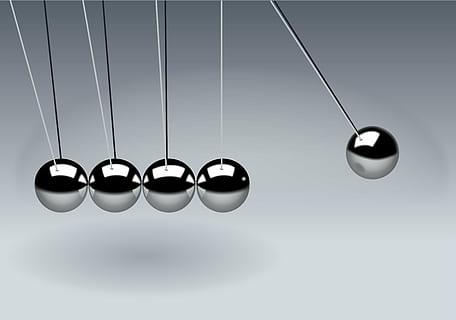
This lesson serves to provide an extension to lesson one. In this lesson, students will have the opportunity to build their own model of the solar system to scale, utilizing math concepts of exponents

This lesson serves as visual example of the concept of exponents and how scientific notation is utilized in science. Additionally, students will utilize scientific notation to measure distance of

In this lesson, students use the Kepler’s Laws PhET Simulation to collect data on the period and average radius of the planetary orbits. They graph and analyze that data to derive Kepler’s 3rd Law.

Students will use the Sphero bots to collect and graph data to make a prediction.

Students will be using simple equipment to demonstrate the 3 laws of motion. They will be incorporating technology, math, and the scientific method to demonstrate what they know.

How old is Earth? How big is 1 million years compared to 1 billion years? Students will use three models to organize geologic time and practice cross multiplication to solve for a variable.

This lesson gives students another real life example of Newton's Second Law of Motion. Students will use force diagrams and Newton's Second Law of Motion to find their apparent weight as they

Students will build a paper marble run out of recycled paper which maximizes the time of travel. Students will then analyze the run with energy diagrams and determine how much energy was lost.

This is an introductory activity to reaction kinetics at an AP Chemistry level. Students use model kits or Legos in an activity that allows them to model how changing the concentration of reactants in

This lesson is an activity to show how projectile motion and many other motions in nature fallow a parabolic curve. Students will manipulate that knowledge and analyze data using small play tanks to

Get ready to learn about density! This is a density lab involving hot and cold-water layering, salt density layers, and a PHET online lab simulation.

Students will use the engineering design process to complete 3 challenges. Each challenge gathers data and collects their engineering changes necessary to complete the challenge.

Engage students with competitive activities. Students will be predicting measurements, collecting data, and determining the difference between the estimation and the actual. Students will create la

This is a hands-on lesson for both science and math exploration. Students use tape to explore the forces between charges and come up with a mathematical expression for how that works! They create a

This is the 1st lesson in a series of 3. 6th-grade students will work in groups to create eco-friendly inventions that help the environment and tackle climate change. They will research ideas, make

Students will use a known lab to represent photosynthesis in action. They can use this template for the lab and pick another variable to collect data on to complete the story on how photosynthesis

In this outstanding lesson, teachers facilitate students to design and build Meet Edison Robots for Cougar Clash “BattleBot” robot battle classroom tournament. (We named ours Cougar Clash as your

In this engaging lesson, students will model a standing transverse wave using a slinky and collect measurements to find the amplitude, wavelength, and frequency of their wave in order to calculate the

In this creative lesson, students will use a slinky to model two types of waves: longitudinal/compression waves and transverse waves. Through class exploration, students will first practice making the

In this hands-on lesson, students will model transfer of kinetic energy by preparing and measuring the temperature of two equal quantities of water, before mixing them together and then measuring the

Students play a game to model and graph the effects an invasive species on a local ecosystem before analyzing a case study and completing a research project.

Students will make a connection between force, mass, and acceleration (more so velocity). They will design and conduct an experiment to explain how different sized rocks have different outcomes on

Students will use inquiry to see the conversation of energy by burning up oxygen and sugars to see Carbon Dioxide present in a system and create energy.

In this lesson, students will work in small groups of 3-4 to design and engineer a manipulative or activity designed to help practice simplifying expressions. Creative designs for the manipulative
